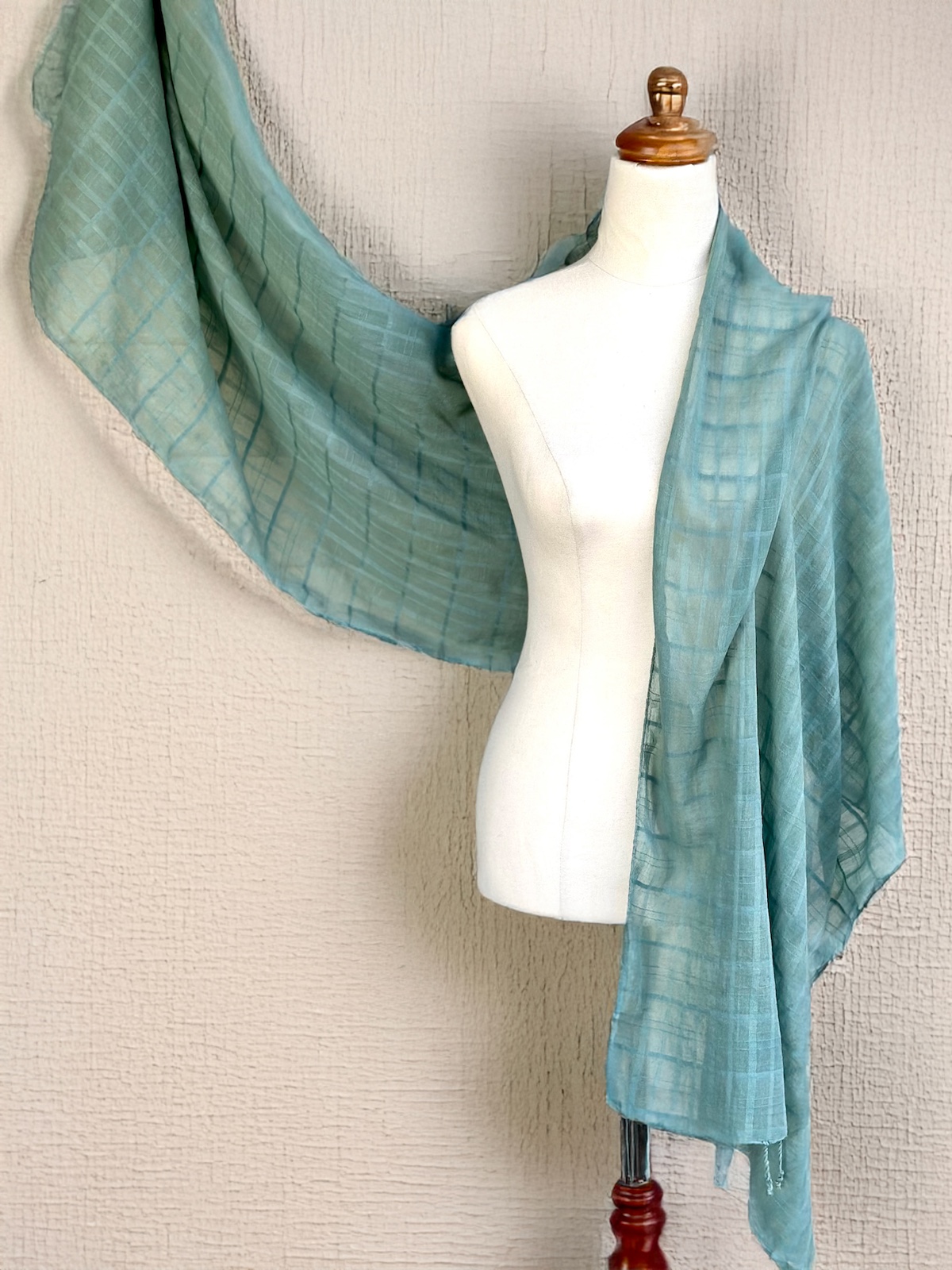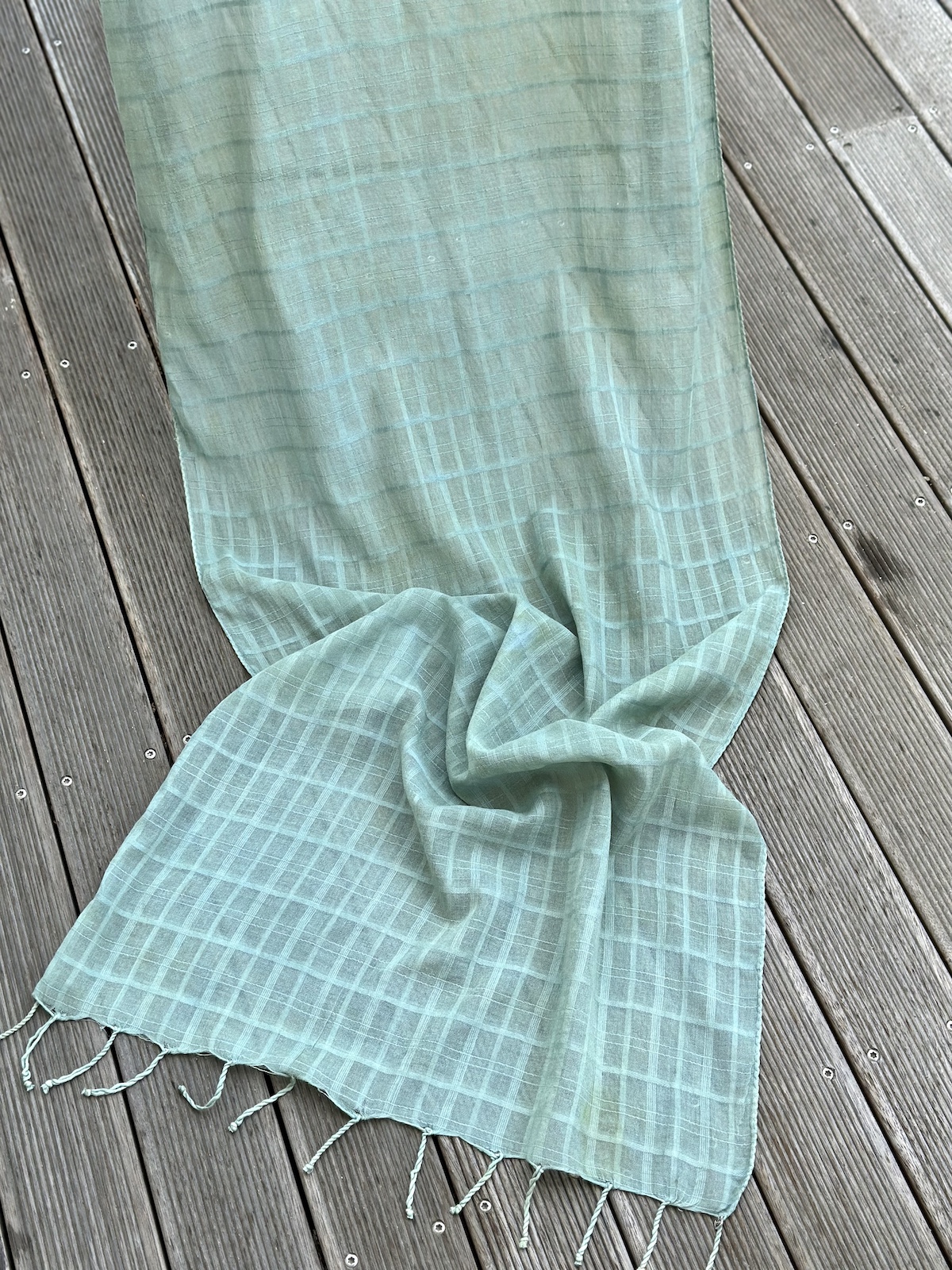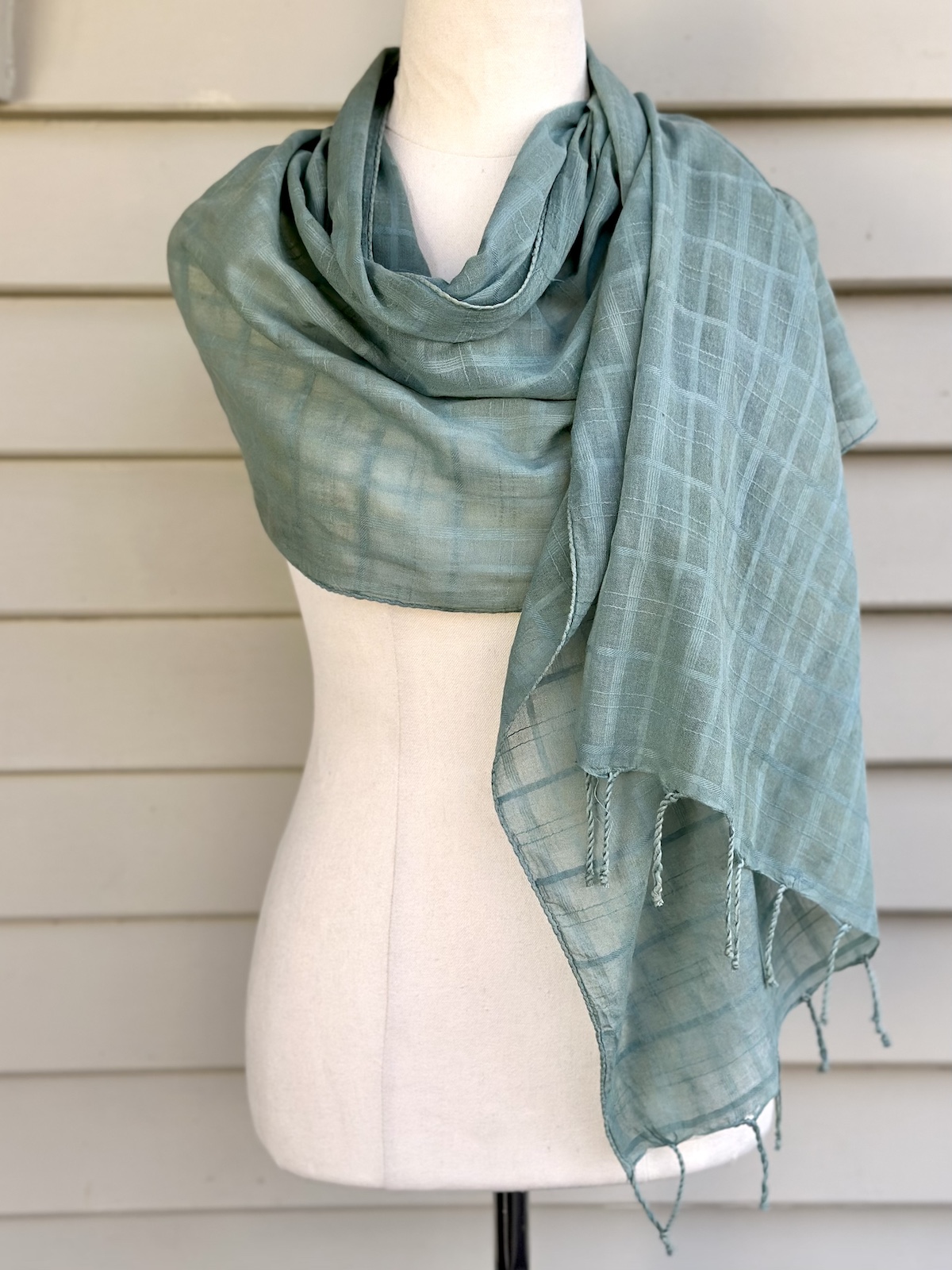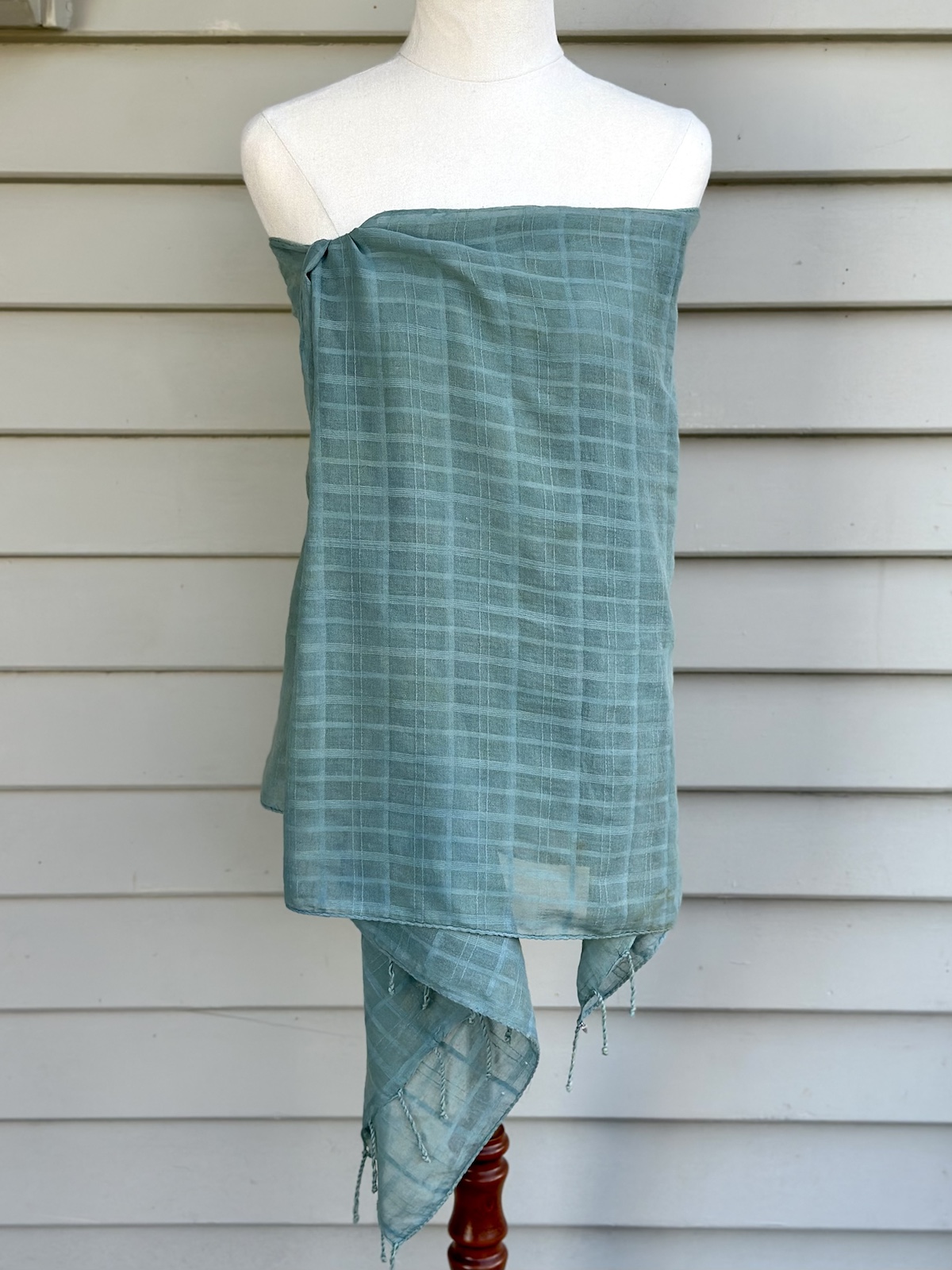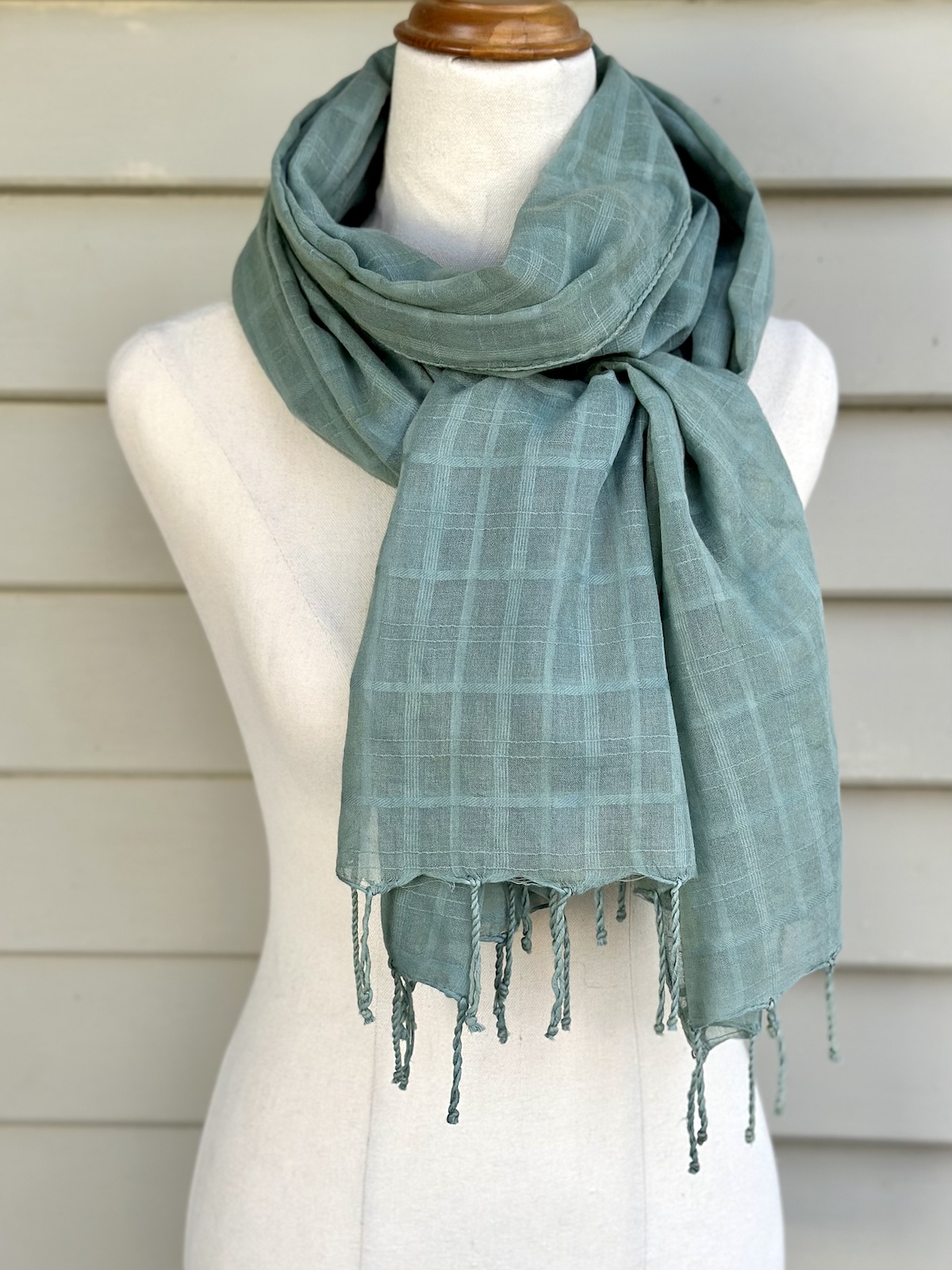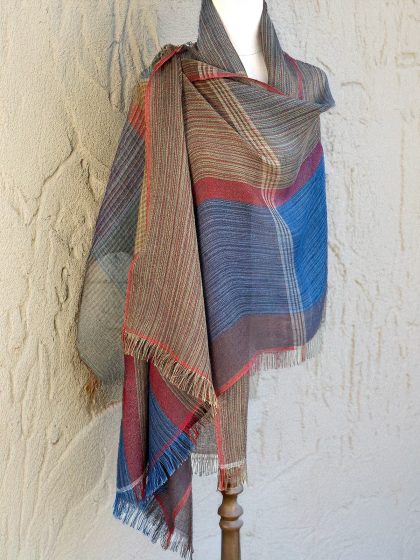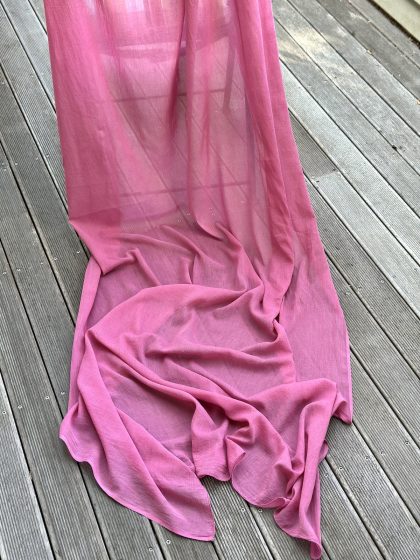Verdigris: The name is inspired by the natural carbonate tint formed on copper when exposed to oxygen, water or carbon dioxide. It is the green patina that forms on old copper pipes – and even the Statue of Liberty. In its day (the 1400s) the colour suggested great wealth and was considered decadent.
This shawl was dyed using marigold, as verdigris is fickle and has a tendency to discolour and fade. The dyestuff consists of dried and ground flower heads of the Tagetes species. Marigold is cultivated all over the world for its decorative flowers, for religious festivals and for its colourant. After the first dye the cloth was then dipped in an indigo vat to create the teal tones.
The shawl is a dream cloth. Large and deliciously sheer and supple. It drapes well, and will look lovely wrapped a couple times around your neck, and as an accent piece. This can also be worn as a beach cover-up, like a sarong.
The shawl has been hand washed and line dried, then hot pressed.
Dimensions: width 22″ – 56cm // length w/0 fringe 82″ – 208cm // fringe 2″ – 5cm.
Dye: Marigold, Indigo overdye.
Materials: Organic cotton muslin. Twisted fringe.
Care: To protect the natural dyes and to preserve the vibrancy you absolutely must use a pH neutral liquid detergent. Hand wash only. Squeeze and twist to remove excess water and hang to dry. Hot iron.
__________
Though I strive, it is difficult to 100% recreate a natural dye fibre. Every piece is unique and numbered.
Buttery organic cotton spun in India, woven by artisans to a soft semi-transparent fabric that is light and airy. These are sourced undyed in their natural off white state. Then I prepare the fibre for dyeing. It takes many hours to scour and mordant the fibre before the dye can reach the cloth. After dyeing the cloth must rest for at least 2 weeks to settle the dye and optimise lightfastness. Only then can the cloth be washed and prepared for wear.
Natural dyeing is the pure historic foundation of colour. It is a long worthwhile process with numerous steps and stages. Before modern day industrial milling and dyeing, natural dyes were the only way to add colour to beige, brown and off white fibres. This was most arduous as many base ingredients (roots, bugs, leaves, flowers) had to be hand harvested and pounded over time to produce the base for dyeing. Life is much easier now as I can purchase the powder or small bug or root bits ready to go. The harvesting may be more streamlined, but the human element remains, and the base dyes are more expensive than acid dyes.

